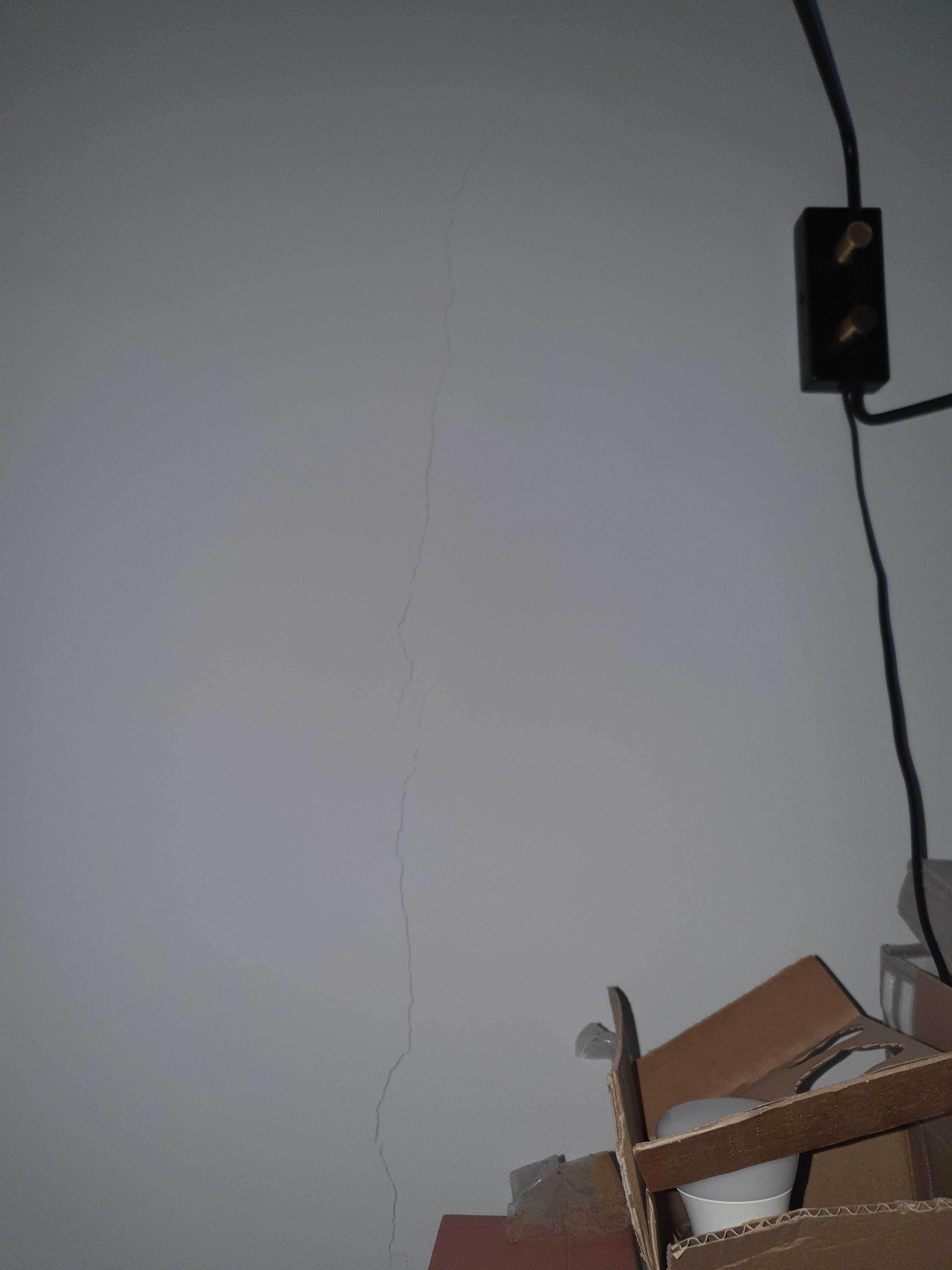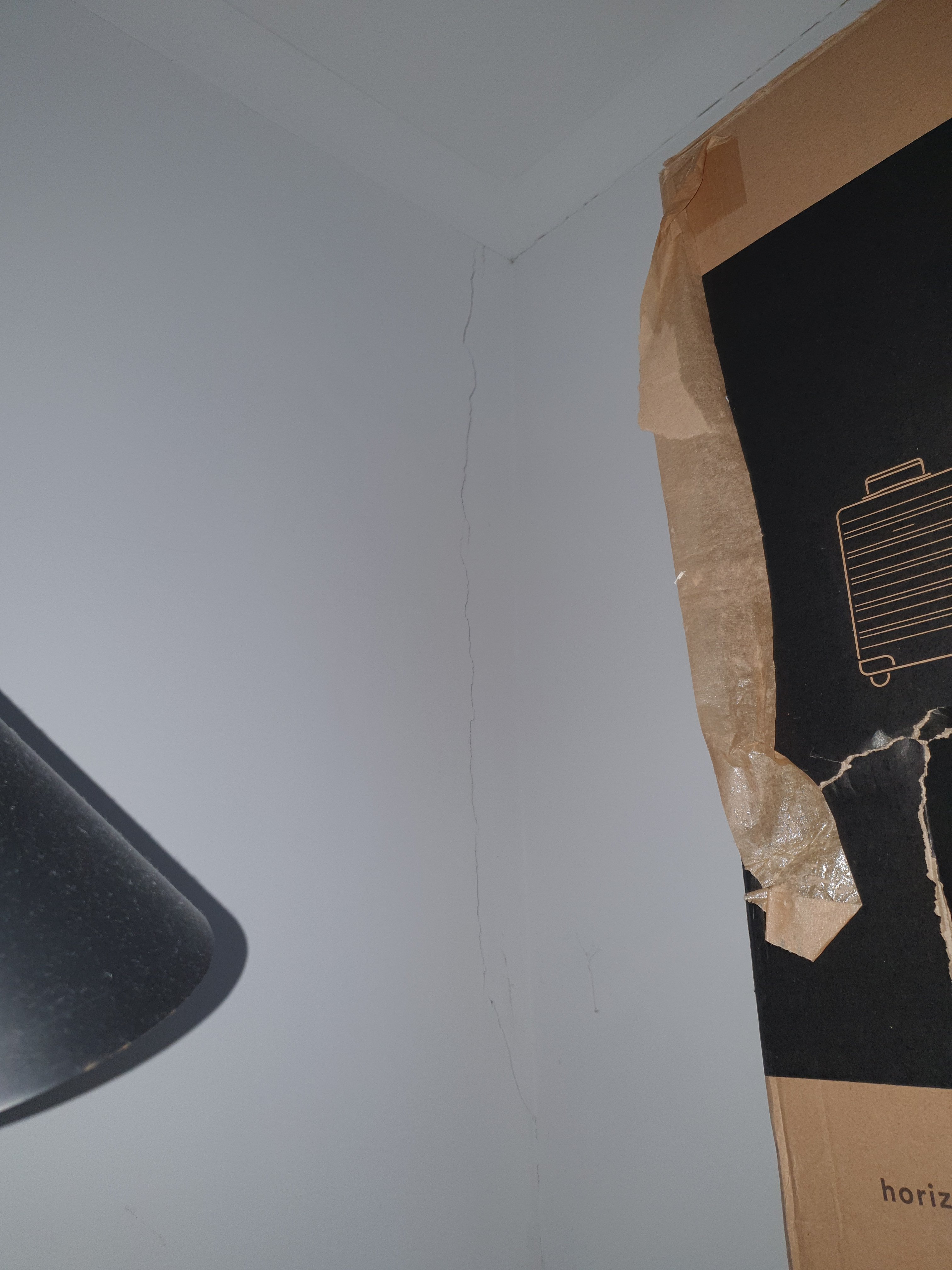We’d like to remind Forumites to please avoid political debate on the Forum.
This is to keep it a safe and useful space for MoneySaving discussions. Threads that are – or become – political in nature may be removed in line with the Forum’s rules. Thank you for your understanding.
📨 Have you signed up to the Forum's new Email Digest yet? Get a selection of trending threads sent straight to your inbox daily, weekly or monthly!
Bay window subsidence vs whole house subsidence
Comments
-
I've added some external photos (there appears to be some cracking on the top window too) and also some further internal ones in the same room as the bay window but on the opposite wall.stuart45 said:Have you got any external photos?

(3x images removed by Forum Team)0 -
Hidiystarter7 said:
HiSilvertabby said:
Does that depend on the age of the house? We bought ours as a new build in the early 1990s, and first saw our property at foundation level - and the (square) bay was definitely part of the whole foundations, not just an add-on.Doozergirl said:It's pretty common for only the bay window to move because they were built with even less foundations than house itself, making them most vulnerable. What you get is differential movement.I am inclined to agree with the builder. Unless there's signs of a wider issue that you haven't mentioned, I'd deal with the bay and not open the insurance can of worms.
Very true indeed,
What can happen I guess is that foundations are only as good as the people that built them. I too have noted houses with actually square bays built around 100 years ago or so having some evidence of movement. These houses I think hardly had any proper foundations as we know them these days
I'm guess that around the bays in older houses andsome 1930's houses for whatever reason they built less durable foundations and this is why youn can often see cracks big and hairlines - I cant think of anything else other than they are more exposed I guess as the stocil out and crack at a joint just like older, terraced up and over houses cracking and the point where the house becomes more narrow - of the case on london's clay soil.
If that was my house, I'd initially seek the opinions of a couple of builders and then a buildings engineer that was local to the area and has been established for a while as thye often know if it is a common problem etc. Then decide your next steps
Good luck
Thanks
Thanks for the pics - to me it looks 100 years old at least, I may be wrong
When was it built and approx where is it.
I've seen damage like this many times in terraced houses in London built on caly, around 100 yrs old or older and from seeing out the foundation of a house we owned 30 yrs ago when we pulled up the floorboards, there appeared to be a bit of hardcore for foundations.
From seeing the pics I am of the firm belief that if it was my place, I'd get an expert in to look at it as you don't want to do one pit and the rest of the place goes out of sync.
Thanks
ps - outside, who did the rendering and or when please - did you paint? Is the render covering more probs? next door looks like good bricks - get it checked by an expert if it was me for a peace of mind.1 -
ps, I'm no builder but looks like London Brick to me, I love that stuff.1
-
diystarter7 said:
Hidiystarter7 said:
HiSilvertabby said:
Does that depend on the age of the house? We bought ours as a new build in the early 1990s, and first saw our property at foundation level - and the (square) bay was definitely part of the whole foundations, not just an add-on.Doozergirl said:It's pretty common for only the bay window to move because they were built with even less foundations than house itself, making them most vulnerable. What you get is differential movement.I am inclined to agree with the builder. Unless there's signs of a wider issue that you haven't mentioned, I'd deal with the bay and not open the insurance can of worms.
Very true indeed,
What can happen I guess is that foundations are only as good as the people that built them. I too have noted houses with actually square bays built around 100 years ago or so having some evidence of movement. These houses I think hardly had any proper foundations as we know them these days
I'm guess that around the bays in older houses andsome 1930's houses for whatever reason they built less durable foundations and this is why youn can often see cracks big and hairlines - I cant think of anything else other than they are more exposed I guess as the stocil out and crack at a joint just like older, terraced up and over houses cracking and the point where the house becomes more narrow - of the case on london's clay soil.
If that was my house, I'd initially seek the opinions of a couple of builders and then a buildings engineer that was local to the area and has been established for a while as thye often know if it is a common problem etc. Then decide your next steps
Good luck
Thanks
Thanks for the pics - to me it looks 100 years old at least, I may be wrong
When was it built and approx where is it.
I've seen damage like this many times in terraced houses in London built on caly, around 100 yrs old or older and from seeing out the foundation of a house we owned 30 yrs ago when we pulled up the floorboards, there appeared to be a bit of hardcore for foundations.
From seeing the pics I am of the firm belief that if it was my place, I'd get an expert in to look at it as you don't want to do one pit and the rest of the place goes out of sync.
Thanks
ps - outside, who did the rendering and or when please - did you paint? Is the render covering more probs? next door looks like good bricks - get it checked by an expert if it was me for a peace of mind.OP, it would be wise to treat the advice of that poster with a good degree of caution - e.g. commensurate with their use of the word "guess" three times in their post at 1:34PM this afternoon.Seeking advice from a professional structural engineer is likely to be the correct thing to do, but the first step is to get a trial pit dug - as the information gained from that is a pre-requisite for a structural engineer to advise. A competent builder can do that for you - so long as they do not undermine the foundations - without risk of the "rest of the place go[ing] out of sync" (whatever that means).The air bricks in the bay look very new - do you know the story behind them? Were they replacements for older ones, or ones newly installed?2 -
Thanks, for everyone's advice. It is indeed London built 1890's.
I've found a structural engineer and he's due to come out next week. Air bricks I added about 5 year's ago as previous owner's had blocked them up and I replaced the floor boards and was told that I needed more air flow underneath.
In terms of the render that was done 8 years ago. The pebble dash was meant to be removed, but they had trouble doing so so rendered directly on top.
1 -
BTW, if it is just the bay window, would I need to get a party wall done with next door?0
-
We were thinking of converting the cellar of a Victorian property we own, and we needed to know the foundation depth. The builder allocated a few hours for digging the trial pit, but it actually took him ten minutes, as the "foundations" were only half a brick deep.

That put us off the cellar conversion, but the house has stood up perfectly well for 130 years without proper foundations. London clay, too.
No reliance should be placed on the above! Absolutely none, do you hear?3 -
That's about what I'd be expecting the OP to find!GDB2222 said:We were thinking of converting the cellar of a Victorian property we own, and we needed to know the foundation depth. The builder allocated a few hours for digging the trial pit, but it actually took him ten minutes, as the "foundations" were only half a brick deep.
That put us off the cellar conversion, but the house has stood up perfectly well for 130 years without proper foundations. London clay, too.
Everything that is supposed to be in heaven is already here on earth.
3 -
Hi OPJeezz said:Thanks, for everyone's advice. It is indeed London built 1890's.
I've found a structural engineer and he's due to come out next week. Air bricks I added about 5 year's ago as previous owner's had blocked them up and I replaced the floor boards and was told that I needed more air flow underneath.
In terms of the render that was done 8 years ago. The pebble dash was meant to be removed, but they had trouble doing so so rendered directly on top.
Thanks for the update.
Re airbricks. Years ago on a semi, I replaced all airbrick on our protery and added exta, larger ones to the sides as the rear had a raised conservatory and though there were air bricks to the rear of that as the house was higher than ground level and conservatory, the airbricks led no where so extra briks did the trick. Air under floorboards is always good.
I hope it is easily resovled
Good luck.1 -
Thanks just as I thoght. The up-and-over house we had in London about 30 years ago or so - as I said when we pulled up the boards it was a bit of hardcore. Some have movement, and some dont. It is the way many were built I guess depending on who built them.GDB2222 said:We were thinking of converting the cellar of a Victorian property we own, and we needed to know the foundation depth. The builder allocated a few hours for digging the trial pit, but it actually took him ten minutes, as the "foundations" were only half a brick deep.
That put us off the cellar conversion, but the house has stood up perfectly well for 130 years without proper foundations. London clay, too.
good luck.1
Confirm your email address to Create Threads and Reply

Categories
- All Categories
- 352K Banking & Borrowing
- 253.5K Reduce Debt & Boost Income
- 454.1K Spending & Discounts
- 245K Work, Benefits & Business
- 600.5K Mortgages, Homes & Bills
- 177.4K Life & Family
- 258.7K Travel & Transport
- 1.5M Hobbies & Leisure
- 16.2K Discuss & Feedback
- 37.6K Read-Only Boards





